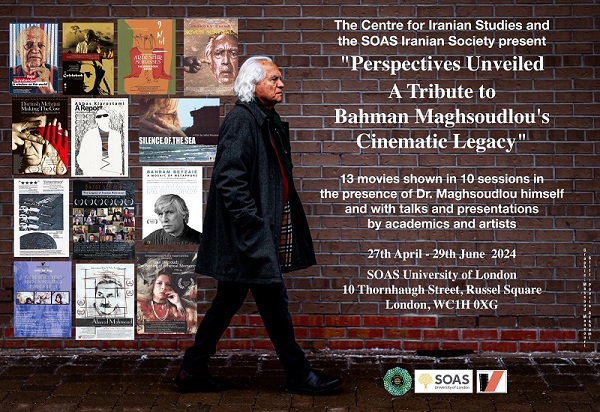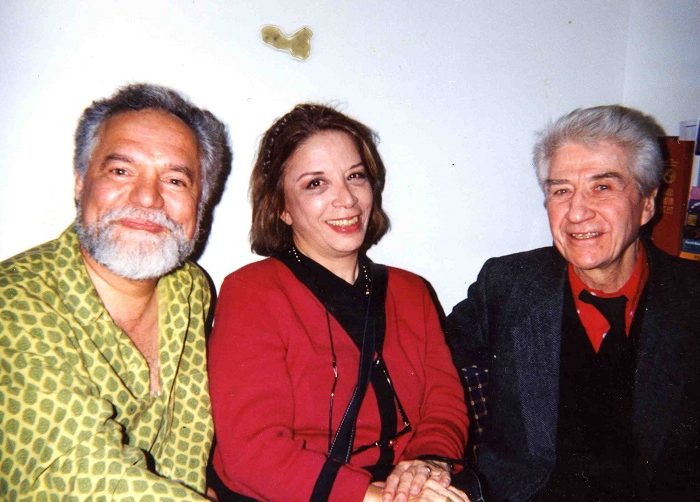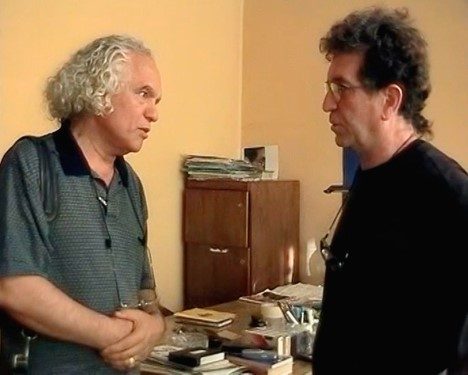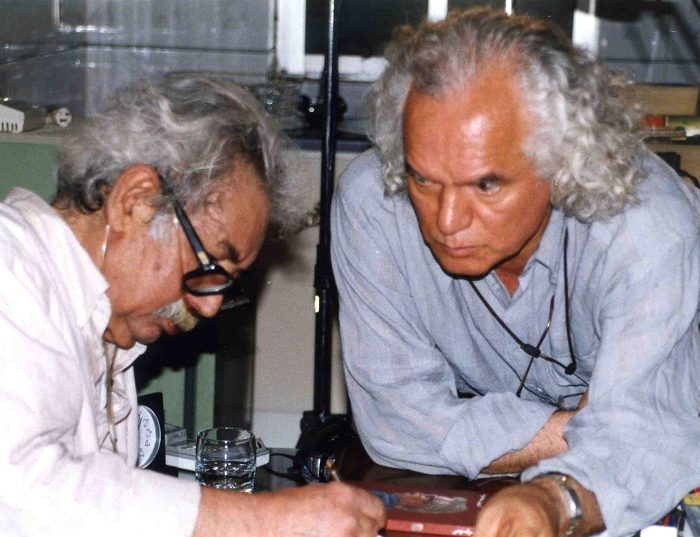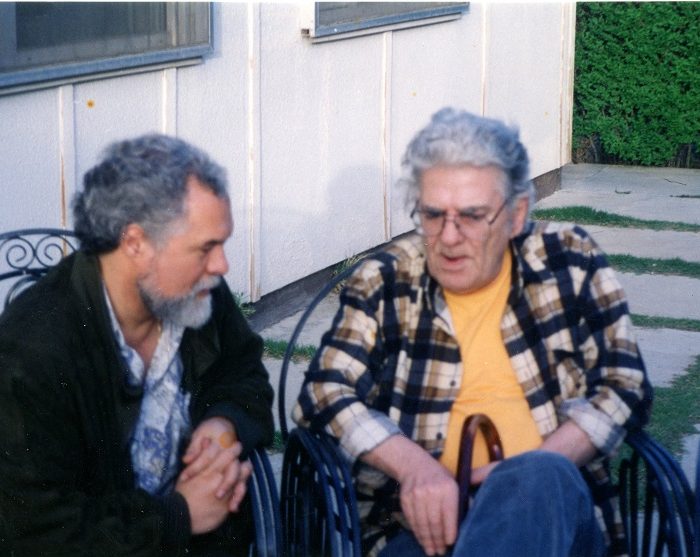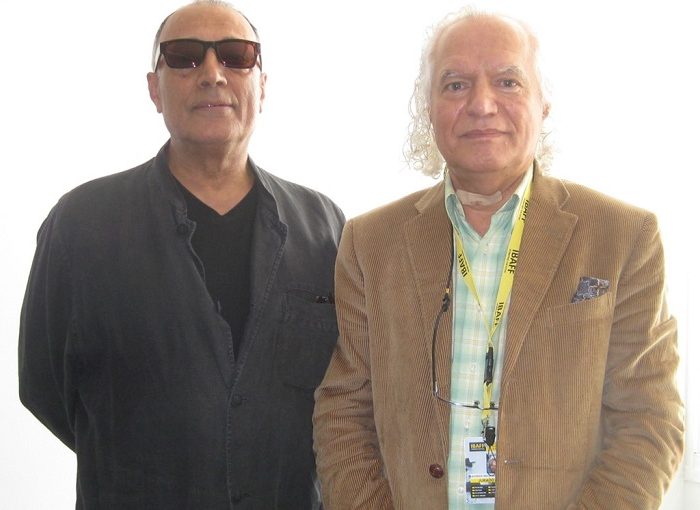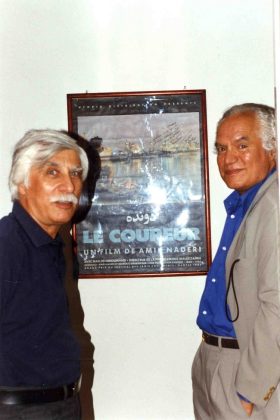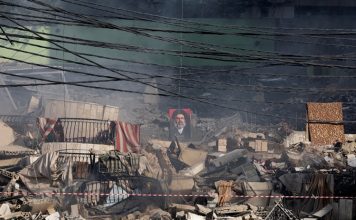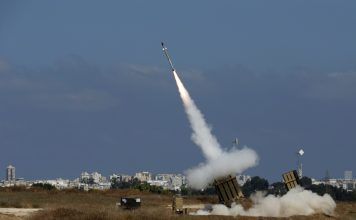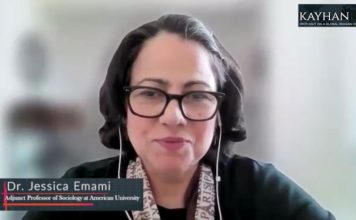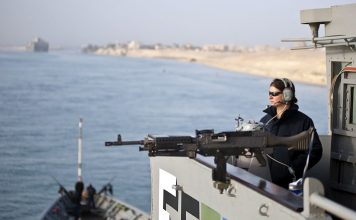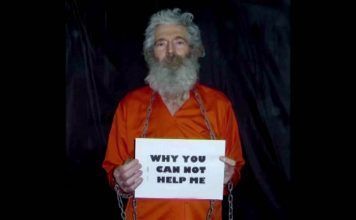By Katayoun Shahandeh
Bahman Maghsoudlou, the awardwinning Iranian filmmaker and author, is receiving a major tribute from the University of London’s School of African and Oriental Studies (SOAS): 13 of his films will feature in 10 screenings in a festival running from April 27 to June 29. It’s the first-ever homage of its kind to the filmmaker.
The director of 10 documentaries and the producer of more than 20 films, Maghsoudlou has been selected for more than 100 major festivals and garnered many awards. His award-winning titles include “The Suitors” (1988), “Manhattan by Numbers” (1993), “Seven Servants” starring the legendary actor Anthony Quinn (1996), and “Life in Fog” (1998), a short documentary which holds the record within its category for the most awards in the history of Iranian cinema. Another movie he produced, the 2003 “Silence of the Sea,” won six prizes and was selected for more than 20 film festivals, including the Sundance Film Festival in 2004.
Maghsoudlou is also a published author and winner of Iran’s prestigious Forough Farrokhzad literary award in 1975, honoring his contributions to cinema and theater. His recent publications include “Charmed by the Silver Screen: The World Cinema” (Tehran: Damon, 2023), and “Charmed by the Silver Screen: Iranian Cinema” (Tehran: Aadeh, 2024), as well as a published interview with the director Bahram Beyzaie.
On a visit to London in the run-up to the SOAS festival, Maghsoudlou sat down with Kayhan Life for an interview.
Can you tell us about your journey into the world of cinema?
My journey into the world of cinema began in childhood, nurtured by a family deeply immersed in culture. Growing up, I avidly read newspapers and novels, from a very early age, developing a fascination for the silver screen. Watching films with my older brother sparked my passion, and I began collecting film frames and writing about the movies that captivated me. As a medical student at 17, I started writing film criticism for various publications, paving the way for my future career.
After a few years of writing about art and cinema, I became an independent editor for the Art & Literature section of Roshanfekr magazine. Subsequently, I was promoted to the position of editor-in-chief at Setareh Cinema, a prestigious publication that fostered intellectual discourse among Iranian artists, writers, and film enthusiasts. Despite facing censorship, I persevered and initiated the publication of a series of books on cinema and theater titled Vizheye Cinema va Teatre which garnered acclaim and recognition, including the Forough Farrokhzad literary award in 1975.
Simultaneously, I ventured into television production, working with Iranian National Television and producing arts programs. One of my projects was directing a documentary about the renowned Iranian artist Ardeshir Mohasses, which received acclaim at the Leipzig Film Festival in 1996.
Could you share insights into your creative process and how you approach storytelling through film?
My approach to documentaries is deeply rooted in thorough research and extensive interviews with the subjects. Instead of relying on scripts, I prioritize organic conversations during interviews, aiming to draw out personal insights or contextual elements that naturally shape the film’s narrative. Whether interviewing artists, writers, poets, or filmmakers, I seek to capture their essence.
Inspiration for my projects often arises unexpectedly. For example, the passing of Ardeshir Mohasses in 2008, following a retrospective of his work, reignited my desire to revisit and update my first film. We had both spent considerable time in New York, so our paths had crossed, and his influence lingered. This inspired me to create “Ardeshir Mohasses: The Rebellious Artist,” a one-hour documentary that premiered at the Palm Beach Film Festival in April 2013. The enthusiasm for Mohasses’s work, coupled with his untimely demise, fueled my determination to honor his legacy through film.
As a film scholar and critic, how do you view the evolution of Iranian cinema over the decades, and what are some of the notable trends or movements that have emerged?
Throughout the history of cinema, we often observe a surge in creative output following significant political, social, or economic shifts. Examples include Russian cinema after the 1917 revolution, the French New Wave after World War II, and the new Italian cinema of Pasolini, Fellini, Antonioni, and Visconti, among others. Nations like Spain, Japan, Germany, and South Korea experienced a cinematic renaissance after transformative events in their history.
Iran’s cinematic journey mirrors this pattern, with two distinct periods of innovation. The first wave emerged from the mid-1960s to the mid-1970s, coinciding with the modernization efforts of the Pahlavi dynasty. The second wave flourished in the late ‘80s and ‘90s following the Revolution of 1979, introducing acclaimed filmmakers like Abbas Kiarostami and Jafar Panahi to the world. While Iranian cinema has commonalities with the cinemas of other countries, its unique qualities, including simplicity of theme, moral values, and a poetic essence rooted in Iranian culture, set it apart, and have drawn international acclaim.
How do you see the trajectory of Iranian cinema evolving in the future, and what challenges and opportunities do you foresee?
By the new millennium, the second New Wave in Iranian cinema had waned, yet individual filmmakers continued to emerge, gaining recognition from international film festivals.
Under strictly ideological governments, control is paramount, so tactics like prison, torture, exile, and censorship are used throughout society. During the Pahlavi era, Iran boasted numerous independent film production companies, and cinema houses were privately owned, ensuring autonomy. Today, the landscape has shifted drastically, with government control dominating every aspect, including film financing and production.
Following the tragic death of Mahsa Amini in 2022, a movement against the compulsory hijab emerged within the Iranian film industry, dividing filmmakers into pro-government propagandists and underground, independent creators who were grouped under the heading “Underground Neo-Realism.” The latter, who produce films clandestinely without permission or adherence to hijab requirements, distribute their work to festivals via the internet, garnering global attention. They take considerable risks, facing imprisonment and bans, to create films that circumvent censorship and achieve international acclaim.
Yet Iranian cinema today struggles, stifled by government control and lack of financial support for independent voices. Artists like Mohammad Rasoulof and Jafar Panahi face persecution, depriving the world of their enriching contributions.
In your documentaries, you’ve explored the lives and contributions of various artists, from writers to painters and filmmakers. What draws you to these subjects, and how do you approach portraying their lives in a way that is both informative and engaging?
I have a deep love for my country’s heritage, art, and culture. The advent of modernism in the 1960s and 1970s brought forth a wave of exceptional artists across various domains, enriching our cultural landscape. However, the Revolution introduced challenges like censorship and hostility toward Iranian traditions, causing significant damage, especially by religious hardliners.
Growing up among Iranian intellectuals, many of whom are now under pressure and experiencing distress, prompted me to create a series of documentaries spotlighting their lives and contributions. Among these individuals are close friends like Ahmad Shamlou, Ahmad Mahmoud, Iran Darroudi, and Najaf Daryabandari.
Additionally, recognizing the global lack of awareness about Iranian cinema pre-1979 and the impact of censorship, I embarked on another documentary series focusing on the pre-revolutionary era and its cinematic achievements. My personal connections with these artists facilitated their participation, yet it was my unwavering passion for their work and Iranian culture that truly inspired their involvement.
As someone deeply involved in Iranian cultural and artistic spheres, what do you hope audiences outside of Iran will gain from engaging with Iranian cinema and literature?
Increasing knowledge can foster connection. In the West, ignorance about Iranian culture persists, often overshadowed by historical events like the 1979 hostage crisis or figures like former President Mahmoud Ahmadinejad. However, there’s a growing awareness, particularly about Iranian cinema.
It’s equally crucial for the Iranian diaspora, especially the younger generations, to reconnect with their heritage. Understanding our rich cultural legacy—poetry, gardens, theater, literature, and cinema — can inspire future generations of artists and intellectuals. By bridging the gap between past and present, we can affirm our identity beyond narratives of oppression and religious extremism.
What future projects or endeavors are you currently passionate about, and what aspirations do you have for your continued contributions to the world of cinema and scholarship?
I dedicate myself tirelessly to promoting Iranian art and culture, investing my time and resources into creating films, books, lectures, and global presentations. Going forward, I am committed to expanding my efforts by creating additional entries in series such as Renowned Iranian Artists and History of Iranian Cinema, as well as exploring new avenues to advance the elevation of Iranian culture.

